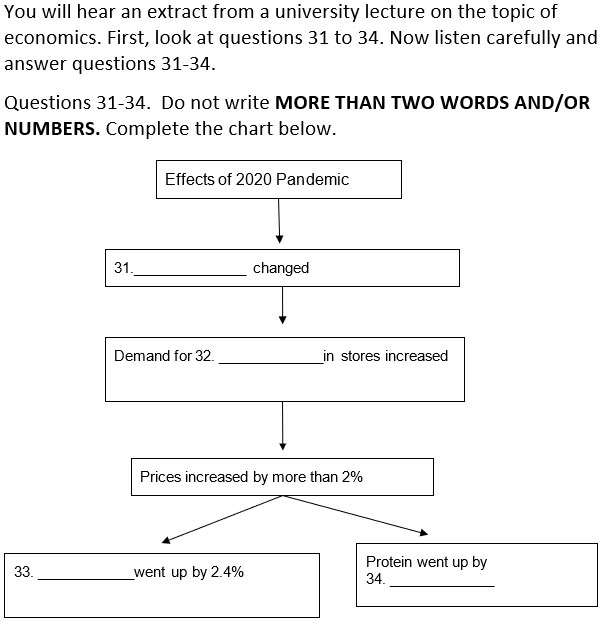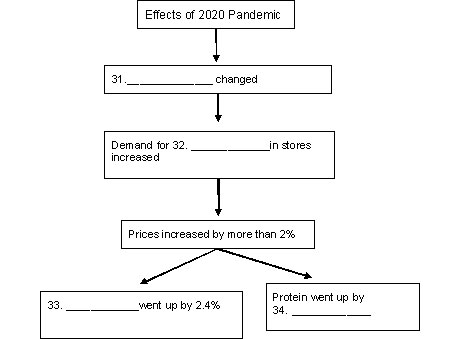IELTS Listening: Flow Chart Completion Practice Test & Tips
- 0 Comments


This is the fourth of five kinds of questions that require you to fill in the gaps in a listening text. The other 4 gap-fill question types are
Table of Contents
1. Flow Chart Completion Question Type Explained
For flow chart completion, you will fill in missing words from the different stages of the chart. You will be presented with flow charts covering many different topics, but they will always have a number of steps with a beginning point and an ending point.
You may see flowcharts especially in part 3 of the Listening Test. Remember, this is where you hear 2 or more people discussing an academic or general topic.
2. This is how the question will appear on your question paper:


3. Before You Listen
Here are some tips that will help you before you listen to the audio:
- Read the instructions carefully! Don’t write any more words and numbers than what the instructions allow you to write. If you do, your answer will be incorrect, even if you technically have the correct answer.
- You will have time to read the notes before the recording plays. Notice if the gap requires a word or a number.
- You will need to listen for specific details and key words.
- Mark key words from the sentences, so you can listen for them.
- Think of synonyms for these key words that you might also hear.
- Based on the flow chart, predict the topic and possible content of the audio you are about to hear.
- Be sure to also read the sections of the flow chart that have no gaps. This will help you keep your place in the audio as you listen.
- Think about the part of speech each gap requires. For example, a noun, a verb, or an adjective.
4. While you Listen:
Here are tips to consider as you are listening:
- The gaps will be in the same order as the information you hear.
- Write numbers in numerical form to prevent spelling mistakes.
- Write the EXACT WORDS you hear in the audio recording.
- It is allowed and advisable to write your answers in all capital letters. They are easier to read, and you can avoid incorrect capitalization, which would be marked incorrect.
- Check the progression of questions carefully. The questions will not necessarily go from left to right in the table.
If you have trouble with a question, make an educated guess and move on. You don’t want to lose your place in the audio and risk missing even more questions. Don’t leave any answers blank, even if you have to guess.
5. Ready to try a sample question?
First, read through the flow chart quickly, paying special attention to the words and numbers around each gap. Then, click play and listen to the audio to find the answers. During the actual exam, you will only be able to hear the audio once, so try to answer the questions as you listen one time. Of course, since you are practicing, you may listen to the audio multiple times to become more familiar with the question type and how to answer it.
Ready? Here are the questions.
You will hear an extract from a university lecture on the topic of economics. First, look at questions 31 to 34. Now listen carefully and answer questions 31-34.
Questions 31-34. Do not write MORE THAN TWO WORDS AND/OR NUMBERS. Complete the chart below.


Now, listen to the audio and answer the question.










